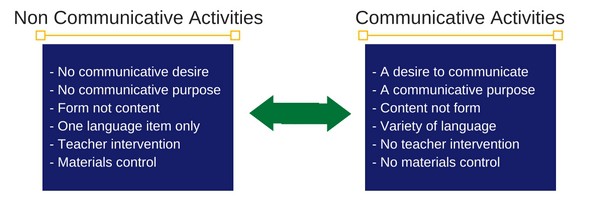The PPP method is great for your Shane English Schools’ SPEC books, but what happens when your students are more advanced? There are a number of alternate methods that can engage and interest your students. These methods can be used with upper-level classes within the Shane Schools curriculum, though they can be supplemental in any program that focuses on teaching via the PPP method.
The five alternatives to the PPP method can be found below. Or, if you’d like a quick refresher on the PPP method, click here.
- Teach-Test-Teach (TTT)
- Engage-Study-Activate (ESA)
- Task-Based Approach (TBA)
- Content Based Learning
- Communicative Approach
1. Teach-Test-Teach (TTT)
Aim: To teach language the students do not know. How?
Test: Provide the students with an activity which uses the target language and perhaps some associated language as well. Monitor the students and see what they can and cannot do.
Teach: Teach the students the language they do not know or have trouble with. You might also take existing language and apply it to other situations, or teach a more detailed and advanced study of it.
Test: Test the students on the language you have just taught in the form of one or more activities.
2. Engage-Study-Activate (ESA)
This method is similar to the PPP method of teaching.
Engage: Gets the students thinking and using English. The teacher can also generate interest in the language point, vocabulary, etc., to be taught. This gives them a reason to learn and study.
Study: Study the main language point. You will need to present what you are doing and work on it. This could include worksheets and feedback sessions.
Activate: Students use any or all of their skills as well as the main language point in activities that focus more on fluency than accuracy. This would also include a feedback session.
ESA can be done in a variety of orders. E.A.S.A., E.S.A.S.A., E.A.A.S.A., etc.
3. Task-Based Approach (TBA)
Activities must be tasks.
Definition of a task: An opportunity to use meaning-focused language. i.e. Not doing a drill just to help the student to remember, or writing to show an accuracy of form.
For example: preparing a debate, designing a poster, drawing a floor plan for a bedroom, using a timetable to plan a trip, writing story problems, a science experiment, etc.
Here are some questions you can ask to help you see if your activity is a task appropriate for TBA.
- Will the activity engage the learner’s interest?
- Is there a primary focus on meaning?
- Is there a goal or outcome?
- Is success judged in terms of outcome?
- Is completion a priority?
- Does the activity relate to real world activities?
The stages of a TBA lesson are as follows:
- Pre-Task: Introduction of th topic. Gives clear instructions for the task stage, may include a recording of people doing the task.
- Task: Completed in pairs or groups.
- Planning: Students prepare a report about what happened in the task.
- Report: Students report back what happened in the task.
- Analysis: Highlight relevant parts of the text to study, and/or from the report. This should be the TL for the day.
- Practice: Students practice the highlighted area of language that they have just looked at.
Click here for a longer article about task-based learning.
4. Content-Based Learning (CBL)
Content-Based Learning is teaching English through media not specifically designed for English and/or using subjects other than pure English to learn the language. This means you will teach around a topic, rather than vocab, grammar, etc.
When designing a lesson:
- Choose tasks that use higher thinking skills (evaluation, problem solving, clarifying, etc.).
- Vary ways to teach content.
- Teach vocabulary as a separate skill.
- Put the lesson in context and relate it to the students.
When planning:
- Generate interest in the subject.
- Choose a number of sources that the students can use.
- Use group work and assign the students tasks.
- After research, students can pool and compare information with other groups
- A report of some kind.
5. Communicative Approach
An activity, exercise or lesson that:
- Gets learners to speak and listen to each other
- Requires learners to acquire or give information of some sort to/from another person.
- Gets learners to act in a realistic or meaningful way.
- Focuses primarily on the function of language rather than grammar and vocabulary.
Ideas for Communicative Activities
- Picture Differences
- Group Planning
- List Sequencing
- Pyramid Construction (Individual work, then pairs, then fours etc)
- Board Games
- Puzzles and Problems
Tips for Communicative Activities
- Use a lead in to help the students ease into the activity and theme of the lesson.
- Give students plenty of time to prepare their thoughts.
- Try to keep the flow of communication fluid.
- Use specific problems as opposed to general ones. This gives the students direction and focus.
- Use role cards, role plays and real plays.
- Use buzz groups – breaking a class group into smaller groups and asking them to summarise or add to the discussion.
A version of this article originally appeared in Shane English Schools Taiwan’s Teaching English to Young Learners (TEYL) program, which is part of all new teachers’ orientation.

We're hiring!
With schools around the world, Shane English School always has exciting new opportunities to offer.


